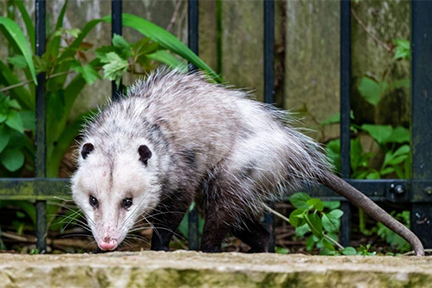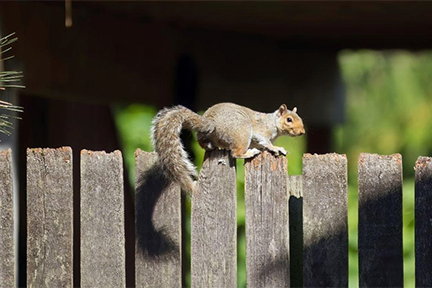
Wildlife removal can be vital for ensuring a home's long-term safety. Animals like raccoons, opossums, and squirrels can create various hazards, ranging from structural damage to health risks due to diseases they might carry. Ensuring effective wildlife removal protects the home's integrity and its inhabitants' well-being.
Wildlife intrusions often lead to costly repairs if not addressed promptly. Animals can chew through wires, damage insulation, and create entry points for additional pests. Eliminating these threats not only reduces repair expenses but also maintains the property's value. Investing in professional removal services can thus prevent these issues outright.
Understanding the Risks of Wildlife on Your Property
Wildlife on your property poses significant risks, including structural damage and health hazards. Recognizing these threats is essential for safeguarding your home and family.
Identifying Common Intrusive Species
Various species can infiltrate homes, seeking food and shelter, such as:
- Raccoons - are notorious for tearing shingles and accessing attics.
- Opossums - can damage soffits, vents, or chimneys as they try to gain access to your home.
- Squirrels - often gnaw on wires, increasing fire risks.
- Birds - can block vents with nests.
Wildlife removal for home safety is crucial to prevent these animals from causing harm. Early identification of these species protects your home’s integrity.
Structural Damage and Health Hazards
Wildlife can cause extensive structural damage. Raccoons and squirrels chew through insulation and wiring, potentially leading to costly repairs. Bats and birds nesting in ventilation systems may cause blockages, leading to air quality issues.
Health hazards include diseases such as:
- Lyme disease - while squirrels are not the main carriers, they can still act as hosts for ticks, especially in areas where ticks are prevalent, which can then infect humans.
- Rabies - one of the most dangerous diseases raccoons can transmit. It is a viral infection that affects the nervous system and is almost always fatal if not treated immediately.
- Salmonella - opossums can carry Salmonella bacteria, which can be transmitted through their feces, leading to food contamination.
Protecting your home from wildlife involves taking precautions against these dangers.
The Benefits of Professional Wildlife Removal 
Professional wildlife removal offers long-term benefits for your home. It ensures safety and prevents future infestations through expert, humane methods. It is a worthwhile investment due to the protection it provides against potential property damage and health risks.
Expertise and Humanitarian Approaches
Engaging professional wildlife removal services ensures access to expertise crucial for handling wildlife intrusions effectively. Specialists are trained to identify the type of wildlife involved, their entry points, and the extent of any damage caused. They also employ humane methods that prioritize the safe relocation of animals, minimizing harm.
A key aspect of professional intervention is the safety it provides. Attempting removal without proper knowledge can lead to injury or incomplete eradication of pests. Professionals use tools and techniques that ensure both safety and efficacy in managing wildlife issues.
Prevention and Future-proofing Your Home
Investing in wildlife removal services offers preventive benefits that safeguard your home against future incursions. Professionals not only remove current invaders but also implement measures to block future entries, preserving the structure and integrity of your property.
They conduct thorough inspections to identify potential vulnerabilities and offer solutions to fortify these areas. This future-proofing aspect saves homeowners from recurring costs and stress associated with repeated infestations, making it a long-term, cost-effective strategy.
Implementing Long-Term Wildlife Control Solutions 
Effective wildlife removal in Hurst is more than a temporary fix; it requires a strategic approach focusing on prevention. By reinforcing structures and altering the landscape around your home, homeowners can maintain property safety and ensure a wildlife-free environment in Hurst.
Structural Reinforcement and Repairs
Ensuring a safe home involves examining and strengthening critical entry points like vents, chimneys, and roofing gaps. Structural reinforcement helps deter animals such as raccoons, squirrels, and opossums, which are adept at exploiting weaknesses.
Repairs should utilize durable materials and proper sealing techniques. Use metal flashing or mesh to cover potential entry paths. Regular inspections keep you aware of new vulnerabilities needing attention.
Weatherproofing not only protects against wildlife but also enhances energy efficiency. Such measures are an investment, promising long-term peace of mind and safety.
Landscaping and Habitat Alteration
Landscaping plays a pivotal role in wildlife control around a property. By modifying the habitat, homeowners can dissuade animals from nesting or foraging near their homes.
Trim back trees and shrubs near the house to eliminate access points to the roof. Remove debris and maintain a tidy yard, reducing hiding or breeding spots. Use plants that repel unwanted wildlife, like mint or marigolds.
Install fences or barriers if necessary, especially if your area has a high incidence of wildlife intrusion.
Homeowners can rely on expert services in Hurst, like Critter Stop, for a competent and humane approach. Critter Stop offers free inspections and is renowned for its high-quality work and exceptional customer service.
Professional services from Critter Stop offer humane solutions to remove animals safely. They have a fantastic reputation and customer reviews online. Those interested in safeguarding their homes should consider calling Critter Stop at (214) 234-2616 to address their wildlife removal needs.
